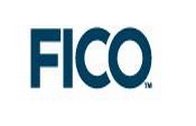Advertisement
A majority of lenders to implement analytic solutions to reduce re-defaults

With minimal resources available to them, few mortgage servicers have invested sufficiently in data management and predictive analytics to adequately identify borrowers most at risk -- but this appears to be changing, according to new research conducted by TowerGroup, a leading research and advisory firm, and distributed by FICO, a leader in analytics and decision management technology. The study, released at the 96th Annual Mortgage Bankers Association Convention & Expo, is published in the FICO Mortgage Credit Risk Manager’s Best Practices Handbook. It assesses the current state of mortgage credit risk management best practices among leading institutions, analyzing the strategic application of technology in financial services based on a survey of senior mortgage credit risk managers who collectively account for 58 percent of first-mortgage outstanding debt.
Findings show that many more loan servicers are moving toward a stronger implementation of analytical tools, with half saying they are currently implementing a solution, and another 20 percent evaluating solutions with the intent to implement them in the next six to 12 months. Executive management is taking note: 72 percent of survey respondents said their management has tightened its focus on credit risk management; the same number said they have had organizational restructuring to increase focus on distressed assets.
In a risk-averse environment, lenders have responded with more conservative loan underwriting practices – yet these practices are too often applied to all loan applicants, putting lenders in jeopardy of losing their best clients. The report suggests that use of customer segmentation analytics will be critical in order to keep clients and maintain profitability. Yet while most institutions have begun to increase spending on analytic and reporting tools, only 24 percent have significantly increased their IT spending budgets.
Additionally, with high demand for loan modification, servicers are under increasing pressure to execute unprofitable transactions in order to keep people in their homes, all the while trying to manage their own portfolios to be lucrative enough to stay in business. In these cases, adapting and adding technology for loan modification programs can be critical. Many are already implementing these technologies, with two-thirds using net present value software to automate required borrower eligibility guidelines for government loan-modification programs. Yet only 36 percent are using decisioning technology to compare alternative loan forbearance programs and decide on the optimal program option.
“Mortgage servicers have seen intense pressure from all sides to reduce re-default rates and keep people in their homes, all the while trying to find ways to better manage risk in order to reduce losses,” said Craig Focardi, senior research director, TowerGroup. “There’s no question that changes within the industry need to be made, and for this reason, focus on mortgage credit risk management has moved from the back office to the C-suite. In particular, the survey examines the power analytics can have to identify smart cures for default risk in order to improve lenders’ operational efficiency, and ultimately, the bottom line.”
“We’ve gained invaluable experience working with mortgage lenders and servicers through our FICO Mortgage Recovery Initiative (FICO MRI),” stated Joanne Gaskin, FICO director of mortgage scoring solutions. “We commissioned this study to more fully understand the loan remediation challenges our clients face, and to gather best practices for our clients to help them improve portfolio profitability and reduce the loan modification re-default rate. By sharing what we’ve learned, FICO can work even more effectively with our clients, bringing the power of analytics and automation to help homeowners receive the most appropriate loan treatment and help preserve homeownership.”
The full FICO Mortgage Credit Risk Managers’ Best Practices Handbook takes an in-depth look at how the mortgage credit risk industry must revamp its processes across the entire consumer credit life cycle, with deep insight into:
► A comparison of standard and best practices in mortgage credit risk management
► Specific steps financial institutions can take to better manage mortgage credit risk
► Latest advances in technology to identify at-risk borrowers
► Best practices for optimizing portfolio net present value while reducing re-defaults
► Integrating transactional data and predictive analytics
For more information, visit FICO.com.
About the author




